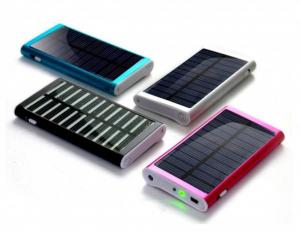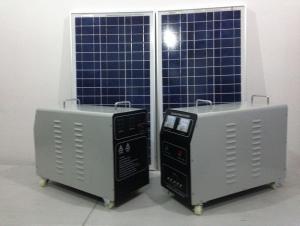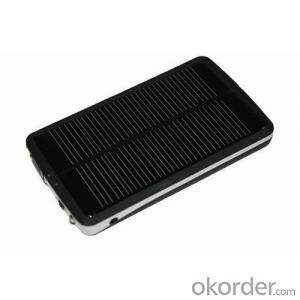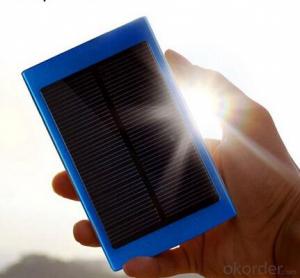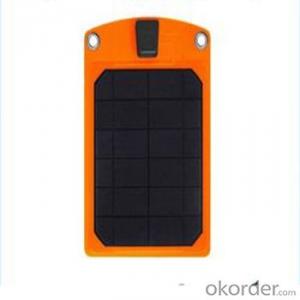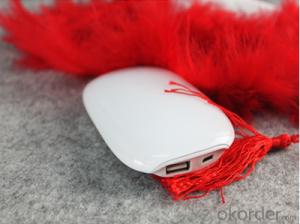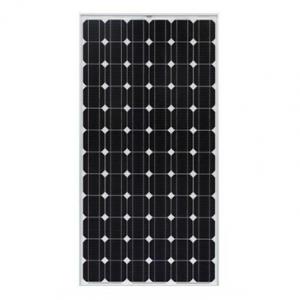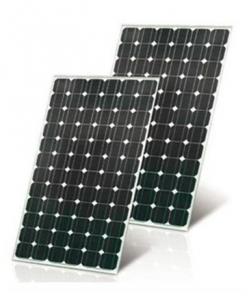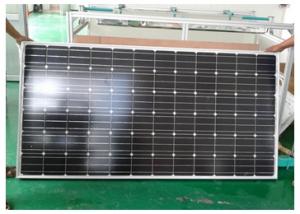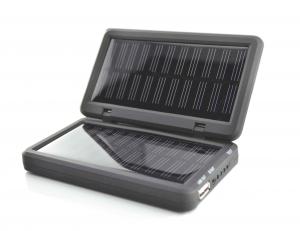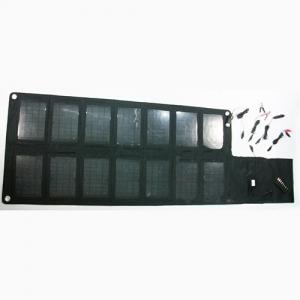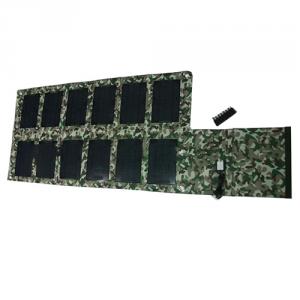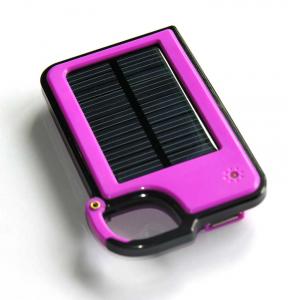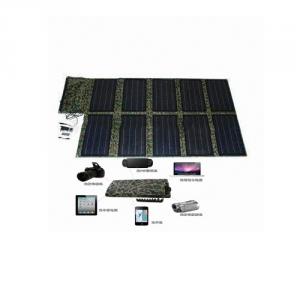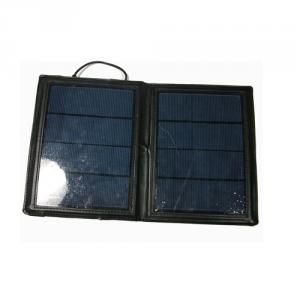Best Rv Solar Chargers - Solar Module Mono-Crystalline 190W 125*125 Module
- Loading Port:
- China Main Port
- Payment Terms:
- TT or LC
- Min Order Qty:
- -
- Supply Capability:
- -
OKorder Service Pledge
OKorder Financial Service
You Might Also Like
Solar Module Descriptions:
A solar panel, or photovoltaic PV module, is a device that is composed of solar cells and which, when struck by photons of light from the sun, generates an electrical current which can then be used to power DC or AC electrical loads.
We are one of the well known manufacturers and suppliers of an extensive range of solar module. Entire range of our products is well checked before offering to the clients to ensure that our products are free from any defect. Our products are delivered within the stipulated time frame. These solar module are available for outdoor applications.
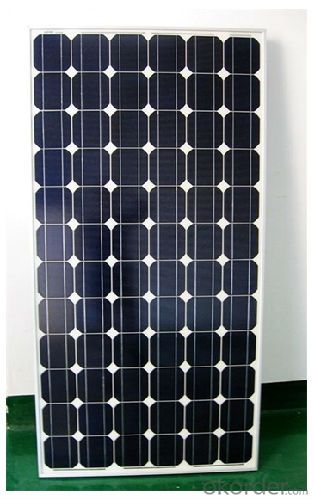
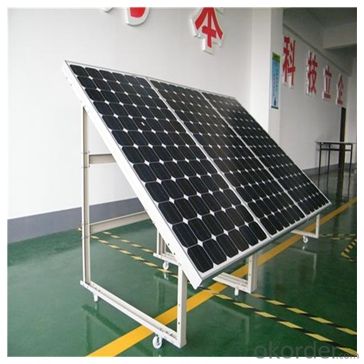
Electrical Characteristics
Module Power (W) | 195> Pm>190 |
Max –Power (W) | 190 |
Max-Power Voltage (V) | 36.5 |
Max-Power Current (A) | 5.2 |
Open-Circuit Voltage (V) | 45.2 |
Short-Circuit Current (A) | 5.6 |
Module Efficiency (%) | 14.9 |
Max-System Voltage (VDC) | 600V(UL)/1000V(IEC) |
Max. Series Fuse (A) | 10 |
Pm Temperature Coefficients (%/℃) | -0.4601 |
Isc Temperature Coefficients (%/℃) | 0.0981 |
Voc Temperature Coefficients (%/℃) | -0.5186 |
NOCT Nominal Operating Cell Temperature (℃) | 45+ 2 |
Maximum load rating ( Pa) | 5400 |
Mechanical Characteristics
Cable type, Diameter and Length | 4mm2, TUV certified, 1000mm |
Type of Connector | Compatible with MC4 plug |
Arrangement of cells | 6*12 |
Cell Size | 125*125 |
Dimension | 1580*808*40 |
Weight | 15.5Kg |
No. of Draining Holes in Frame | 10 |
Glass, Type and Thickness | High Transmission, Low Iron, Tempered Glass 3.2mm |
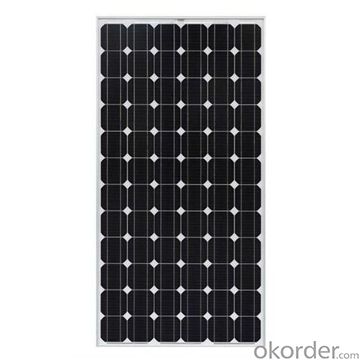
Features
Guaranteed positive tolerance 0/+5w ensures power output reliability
Strong aluminum frames module can bear snow loads up to 5400Pa and wind loads up to 2400Pa.
Excellent performance under low light environments (mornings evenings and cloudy days)
12 years for product defects in materials and workmanship and 25 years for 80% of warranted minimum power.
Certifications and standards: IEC 61215.
Manufactured according to International Quality and Environment Management System (ISO9001, ISO14100).
FAQ
Q: What kind of loads can I run on PV?
With a correctly designed PV system you can power almost any electrical load. However, as the load size increases the expense also increases. Loads like hot water heaters, air conditioners, room heaters and electric stoves should be avoided. The added cost of trying to power loads like these is very cost prohibitive. If these loads have to be powered it will be a lot less expensive to change the appliance to use an alternative fuel type like propane.
Q: When do I need a charge controller and why?
The safest way to figure out if you need a charge controller is to take Battery Amp Hour Capacity and divide this by the Solar Panel max. power amp rating. If the quotient is above 200, you don't need a controller. If the number is less than 200 than you need a controller.
For example if you have a 100 amp hour battery and a 10 watt panel, you take 100 and divide it by .6 (600mA) and you get 166.6. Since this is less than 200 you need a charge controller. If you have a five-watt panel in the above example you take 100 divided by .3 (300mA) and you come up with 333.3. Since this is larger than 200 you do not need a charge controller. However you still need a blocking diode, to prevent the battery from discharging to the panel at night. So as a general rule of thumb you don't need a charge controller unless you have more than five watts of solar for every 100-amp hours of battery capacity.
- Q: Are solar chargers suitable for extended travel abroad?
- Yes, solar chargers are suitable for extended travel abroad. They provide a convenient and eco-friendly way to charge your electronic devices, such as smartphones, tablets, and cameras, even in remote areas where access to electricity may be limited. Solar chargers are lightweight, portable, and can be easily attached to backpacks or set up in outdoor environments to harness the power of the sun. They are especially beneficial for travelers who spend a significant amount of time outdoors or engage in activities like camping, hiking, or backpacking.
- Q: Can solar chargers be used to charge electric massagers?
- Yes, solar chargers can be used to charge electric massagers as long as they are compatible with the charger's output voltage and charging port.
- Q: Are there solar chargers specifically designed for camping or hiking?
- Yes, there are solar chargers specifically designed for camping or hiking. These chargers are lightweight, portable, and often equipped with features like rugged durability and weather resistance to withstand outdoor conditions. They are designed to harness solar energy efficiently and provide a reliable source of power to charge electronic devices such as smartphones, tablets, GPS devices, and more while on the go.
- Q: Are there solar chargers with multiple charging ports?
- Yes, there are solar chargers available in the market that come with multiple charging ports. These chargers are designed to charge multiple devices simultaneously, making them convenient for individuals who need to charge multiple devices on the go.
- Q: Can solar chargers charge electric foot spas?
- Yes, solar chargers can charge electric foot spas as long as they have a compatible charging port and the solar charger has sufficient power output to meet the spa's charging requirements.
- Q: What is the lifespan of a solar charger's battery?
- The lifespan of a solar charger's battery can vary depending on various factors such as the quality of the battery, usage patterns, and maintenance practices. On average, a well-maintained solar charger's battery can last anywhere from 2 to 5 years. However, with proper care and occasional replacement of the battery, some solar chargers can last even longer.
- Q: Can solar chargers charge laptops?
- Yes, solar chargers can charge laptops. However, it is important to note that not all solar chargers are designed to charge laptops directly. Some solar chargers may only be capable of charging smaller electronic devices such as smartphones or tablets. Therefore, when choosing a solar charger, it is essential to ensure that it has the necessary power output and compatible connectors to charge laptops.
- Q: Are solar chargers suitable for charging electric toothbrushes?
- Yes, solar chargers can be suitable for charging electric toothbrushes as long as they have the appropriate voltage and charging capabilities. However, it's important to check the specifications of both the solar charger and the toothbrush to ensure compatibility.
- Q: Can solar chargers charge electric vacuum cleaners?
- No, solar chargers typically cannot charge electric vacuum cleaners. Vacuum cleaners require a significant amount of power to operate, which is beyond the capabilities of most solar chargers.
- Q: Can I use a solar charger to charge my portable refrigerator?
- Yes, you can use a solar charger to charge your portable refrigerator, provided that the solar charger is capable of generating enough power to meet the refrigerator's energy requirements.
Send your message to us
Best Rv Solar Chargers - Solar Module Mono-Crystalline 190W 125*125 Module
- Loading Port:
- China Main Port
- Payment Terms:
- TT or LC
- Min Order Qty:
- -
- Supply Capability:
- -
OKorder Service Pledge
OKorder Financial Service
Similar products
Hot products
Hot Searches
Related keywords


